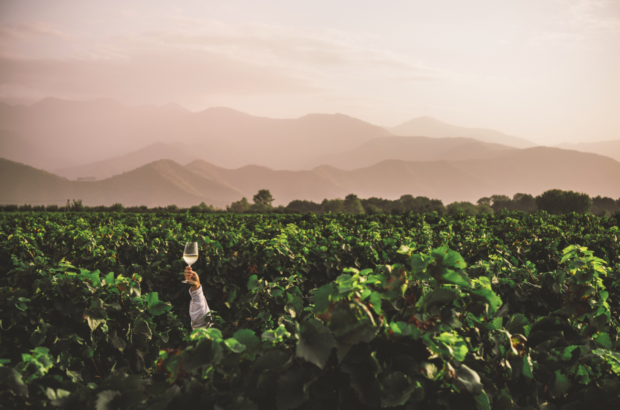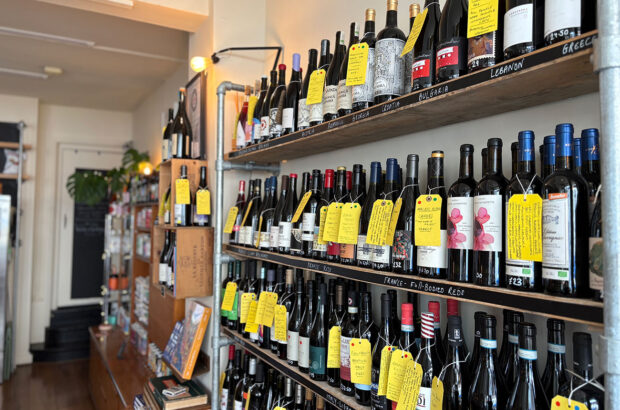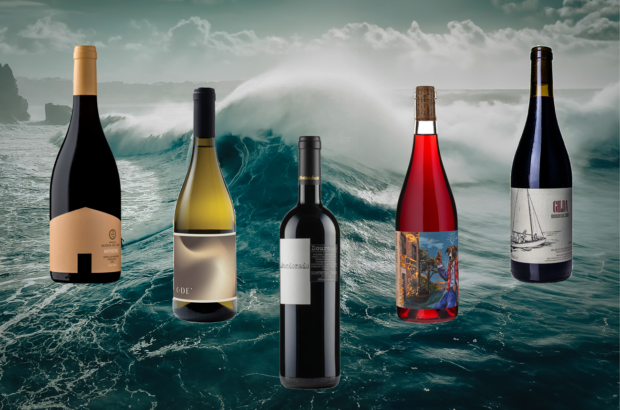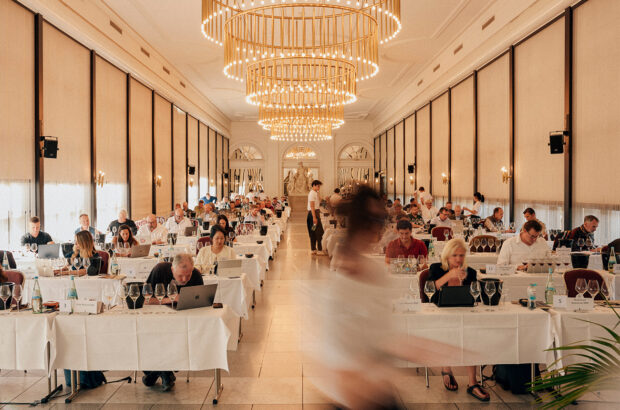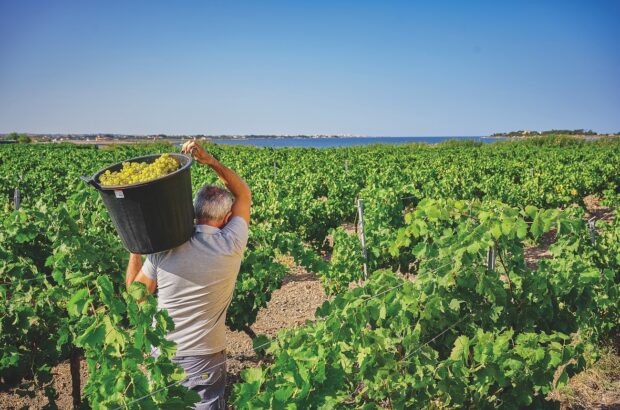‘When it comes to Vitis vinifera genetic diversity, the New World could save the Old World.’ This dramatic statement was made in 2023 by Dr Etienne Neethling, a South Africa-born viticulture researcher now working in France.
This view may be surprising, considering the country that’s home to the largest number of native vinifera grape varieties is Italy. But in general, there has been a dramatic reduction in genetic diversity within many of the ‘noble’ grape varieties over the last century.
Today it’s rare to find a commercial vineyard with more than three or four clones of a variety such as Cabernet Sauvignon.
The situation is different in the wine-growing nations generally still referred to as the New World. Argentina, in particular, has remained a sort of Galapagos Island for same-variety Vitis vinifera genetic diversity – for Malbec and a few other varieties.
This is partly due to its economic and political isolation throughout the second half of the 20th century. But it is also because Argentina has continued to plant vines ungrafted, by massal selection – propagating new vines by taking cuttings from the best-quality vine stock – while most of the world moved to grafted clones.
According to Argentina’s national institute for viticulture INV (Instituto Nacional de Vitivinicultura), about 89% of Argentina’s vineyards are ungrafted and massal-selected; indeed there could be more than 150,000 hectares of ungrafted, massal plantings in Argentina, according to anecdotal evidence from researchers.
If true, this would make Argentina the country with the largest area of ungrafted, massal vineyards in the world.
While France and Italy have begun efforts to preserve massal selections – in some cases even ungrafted massals – even combined they have fewer plantings than Argentina. There are also old vineyards with ungrafted massals in Chile, South Africa, Greece, the Canary Islands, Portugal, Australia, the US and more – but there is no official registry of their surface area.
Grapevine propagation: key terms
Variety: A variation within a species, either naturally (through genetic mutations, natural selection or geographic isolation), or by human design (through long-term selection and propagation). For example, Cabernet Sauvignon is a variety of the species Vitis vinifera.
Clone: A specific iteration of a variety that is vegetatively propagated (through layering or grafting) because of its desirable traits (better taste, disease-resistance, etc) in a given environment. Genetically, clones are identical to the mother vine.
Clonal selection: A method of vine propagation in which individual grapevines with desirable traits are selected and multiplied by vegetative propagation. A clonally selected vineyard will contain genetically identical vine material.
Massal selection: A method of vine propagation in which cuttings are taken from a selection of best-performing vines and multiplied through vegetative propagation. A massal-selected vineyard will contain genetically diverse vine material.
Attack of the clones
How did Argentina come to hold so many ungrafted, massal vines? Until the early 2000s, little genetic material entered the country from abroad. In fact, many of the vines planted in Argentina are the descendants of vines imported from France (via Chile) during the 19th century, before the phylloxera bug pest spread out from northern America to devastate vineyards across Europe and eventually the world over.
It was only Argentina’s emergence as a major wine exporter during the 21st century – which prompted the arrival of foreign investors and flying winemakers, coming in from other countries as consultants – that resulted in the importation of modern clones (see above).
I became aware of the dominance of clonal plantings outside Argentina in the early 2000s, due to a chance encounter with Aubert de Villaine of Burgundy’s Domaine de la Romanée-Conti at the Naples Wine Auction in Florida. I mentioned that I had been making Luca Pinot Noir in Mendoza since 1999.
He politely enquired: ‘Have you planted the Dijon clones?’ I proudly rattled off: 115, 777, 667, Pommard… He replied that his vineyards were planted with massal selections of Pinot Noir and not with Dijon clones.
Now, massal selection: that was something I could really talk about! It had been our family’s method of planting since my Italian great-grandfather grew his first vines in Mendoza in 1902. What followed was one of the most crucial conversations of my life.
When he heard that we had hundreds of thousands of hectares of massal vineyards in Argentina, de Villaine convinced me that this was extremely special. He wished that he could have massal Pinot Noir vineyards in Burgundy, like we have for Malbec in Argentina.
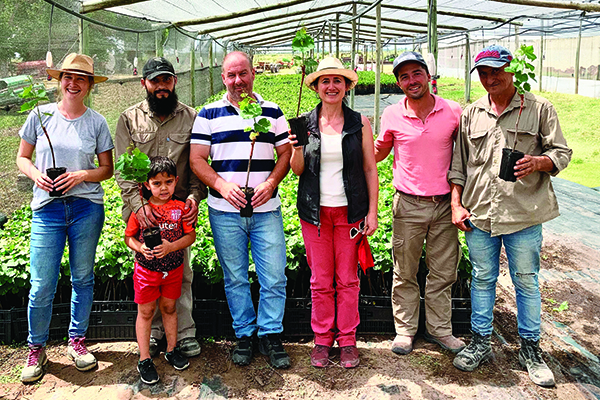
Dr Laura Catena and staff at the Nicolás Catena Viñedo Supersónico vine nursery. Credit: Laura Catena.
Natural selection
So how did this situation arise? It started like many other human endeavours, with people trying to improve on nature. Selection of the most productive crops for farming dates back to Neolithic times when early humans transitioned from hunting and gathering to farming.
Plants and seeds were selected with desirable traits such as higher yields, better taste or disease resistance.
Possibly as far back as 10,000 years ago, grape cultivation used massal selections. By the late 1800s, after the initial damage of the phylloxera crisis, American and European viticulturists saved their winemaking regions by grafting Vitis vinifera varieties onto the phylloxera-resistant rootstocks of American vine species.
Grafting required significant technical expertise. The art of massal propagation – whereby a year’s pruning materials would be planted in pots and used to create a new vineyard – was substituted by vine nurseries and a more controlled form of propagation.
In this setting, it made sense to reproduce just a few select clones – qualitative clones that would all ripen at a similar time – of leading varieties such as Chardonnay, Cabernet Sauvignon and Pinot Noir.
From the mid-20th century, planting by massal selection was mostly abandoned and the popular ENTAV clones (standing for Etablissement National Technique pour l’Amelioration de la Viticulture, ENTAV is the globally used French agency set up to identify and administer approved vine clones), including the Pinot Noir Dijon clones, became the symbol of the highest-quality vineyards in the world.

A Malbec vine propagated from a pre-phylloxera cutting at the Catena Institute of Wine. Credit: Laura Catena.
Lack of diversity
After the identification of vineyard viruses around this time, institutions such as FPS (Foundation Plant Services) in the US and INRA (named INRAE since a 2020 merger) in France developed certification programs for single-variety clones.
Virus testing and virus-cleaning of plant material is a complex and expensive endeavour, and it made economic sense to undertake these procedures only for the best clones of each variety. Sadly, virus-infected plant material was often discarded, which means that we have already lost much of the diversity for noble varieties such as Cabernet Sauvignon and Chardonnay.
At the same time, government research institutions around the world began to collect and identify individual cuttings of Vitis vinifera varieties to preserve in regional vine nurseries, taking precautions to keep them free of viruses.
I often refer to these government nurseries as ‘plant zoos’ because the diverse genetic material is preserved in small quantities – maybe six plants per genotype (that is, a particular genetic iteration of a grape variety).
In summary, the ‘clonal era’ of this last century has resulted in the world’s commercial vineyards being planted with a reduced population of individual clones, as opposed to what we have in Argentina – namely thousands of hectares of genetically diverse, ungrafted massal vineyards.
Such a viticultural environment is not without its challenges. In Argentina, threats to production from nematodes and water scarcity may compel producers to replant with virus-free clones and rootstocks. So how can these precious, genetically diverse vineyards and the traditional method of planting by massal selection be preserved?
A special case
Studies by the Catena Institute of Wine have shown that Argentina’s ungrafted, massal Malbec vineyards are special. Their yields are on average 75% lower than those produced by the ubiquitous Côt clones commercially available outside Argentina.
Grown in special places like our Adrianna Vineyard at 1,450m elevation in Gualtallary Monasterio, massal Malbec produces an ageworthy, floral, dark wine, with mineral notes and a unique combination of both rough and silky tannins.
In 1995, the Catena Institute of Wine undertook a selection of 133 Malbec cuttings – 120 from our own Angélica Vineyard (planted in 1924) and 13 from public collections at INTA (Argentina’s national institute of agricultural technology) and the Faculty for Agrarian Sciences – which we have studied and reproduced. We have found that yields can vary by as much as 10 times between the most and least productive Malbec cuttings.
Sugar ripeness in grapes at harvest time can vary by 4° Brix, which could mean a monumental two-point difference in the final alcohol level of the wine made. Veraison time (the onset of ripening, when colour begins to change in black grapes) can differ by up to eight days for two different cuttings in the same terroir.
In difficult vintages, our genetically diverse massal plantings are the most resilient, because a spring frost will result in less damage to vines if they are at different stages of ripening. So it is no surprise that our best Malbec, Cabernet Sauvignon and Bonarda wines come from ungrafted, massal vineyards.

Dr Laura Catena with Executive Director of the Catena Institute of Wine, Fernando Buscema. Credit: Catena Institute of Wine.
Research, current and feature
Other areas of study include the impact of viruses on grafted versus ungrafted vineyards. We’re also considering flavour profile, quality and ageability of wines from massal and clonal vineyards in different terroirs, and researching the epigenetic response (how internal or external stimuli affect genetic response) of vine cuttings to high-altitude terroir.
Our massal vineyard cuttings are unique in both their pre-phylloxera status and in their epigenetic adaptations to our high-altitude climate. It’s also important to consider the wider implications of preserving intra-varietal genetic diversity in the face of climate change – this includes the feasibility of ungrafted vineyards to cope with water scarcity.
Our plans for the future include the Nicolás Catena Viñedo Supersónico. In this isolated, virus-free vine nursery we are preserving genetically diverse selections of Malbec, Bonarda, Cabernet Sauvignon, Petit Verdot and Criollas, as well as some specific clones of these and other varieties.
Viejito de Rivadavia Vineyard is another isolated site where we preserve massal selections from old vines rescued from vineyards that are being replanted or pulled out because the land is being sold for housing (sadly, this is an increasingly frequent situation).
This vineyard is purposely not virus-free. As a scientist I am convinced that within the next decade, virus testing and cleaning will become much less expensive; therefore our current priority is to preserve the largest amount of genetically diverse vines rather than clean material.
Finally, we are collaborating with the district of Luján de Cuyo, Mendoza, on the 100-year-old vineyards project. Luján de Cuyo boasts the largest concentration of centenarian vines in Argentina, with 150 vineyards covering approximately 1,000ha, according to the INV institute for viticulture.
Together with local researchers, we are working to preserve massal selections of Malbec from these old vineyards that are at significant risk of disappearing. We sign an affidavit with all vineyard owners who are providing us with vine material, stating that if a future generation of their family wants to plant a vineyard, we will provide the cuttings for them.

Dr Laura Catena is working to preserve Argentina’s wealth of genetically diverse massal vineyards.
On becoming a vine doctor
As a young woman studying science, I felt that the best way to help the world using science would be by becoming a medical doctor – which I did, specifically an Accident & Emergency doctor, a profession which I practised for 27 years in the US while at the same time working at the Catena family winery in Argentina.
Today, I am committed to helping to preserve the nature that surrounds us, which includes genetically diverse vineyards that are more resilient to climate change. In this way, I am convinced that I can continue to help people, as a vintner.
It’s my belief that wine in moderation can make our lives more joyful and interesting, and perhaps help alleviate the current loneliness epidemic, by encouraging joyful companionship at the table.




